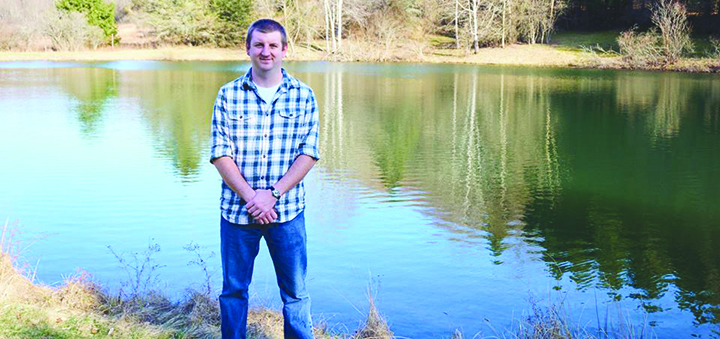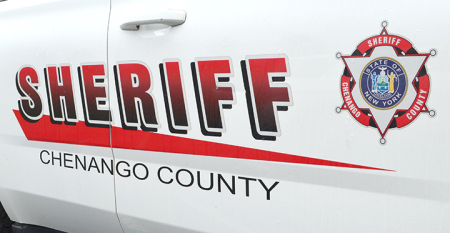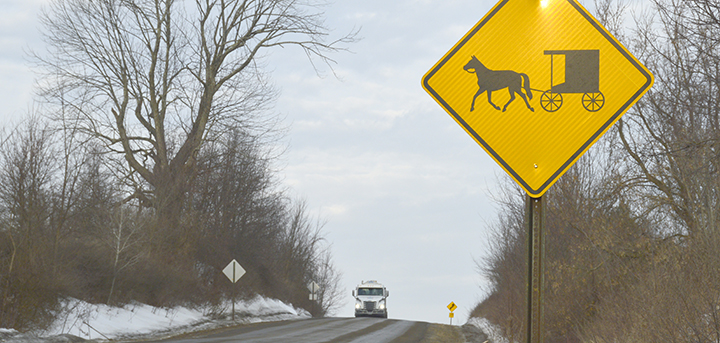Outdoor Chenango: How To: Reading A Bathymetric Map
Published:
February 1st, 2023
By:
Eric Davis

When it comes to fishing either through the ice or during open water, to catch fish you need to be where the fish are. If you have fished a body of water enough, you can get a feel for where the fish are at different times of the year. However, the first few times you fish a new body of water it can be difficult to know the lay of the lake. Most lakes have a bathymetric (bottom contours) map that can provide some important information to you to help you position yourself for success. They key is understanding what the map shows.
The depth of the lake is shown with contour lines. Sometimes only a few lines are labelled with a number while other times every line is labelled, it just depends on the map. If not every line is labelled, count the number of lines between labelled lines. Then subtract the smaller labelled line from the larger one to know the difference, then divide that by the number of lines to know what the increment between lines. Most times it is five or ten feet. The map starts with zero being the shoreline of the lake, and then each contour represents a deeper bottom depth.
You can look at their spacing to understand what might be happening on the bottom. If the lines are close together, that means that the depth is changing rapidly. This means a drop-off. Drop-offs are popular spots to catch predatory fish who hunt along the drop or where those fish will stage before heading into the shallow waters to hunt or spawn.
In contrast, large distances between contour lines means that it is taking longer distance to get to a different depth. These areas are commonly called flats. In shallower water (12 feet or less), these areas usually have heavy vegetation growth. These weedbeds are a refuge for smaller baitfish and invertebrates. Some predator fish like to hunt on the edges (usually the deeper edge) of the weedbed, waiting for a prey item to slip up and come out of their hiding place.
The shape that the contours take can also point out features on the bottom. Where a creek or river feeds into the body of water, there will often be a continuation of the flow pattern resulting in some buildup of bottom debris on one or both sides of the channel. The contour lines will have a “V” shape to them with the tip of the “V” facing upstream. This is because the bottom of the stream is lower than the area on either side, so to have the same depth reading, you would need to go upstream to get to that depth. After storms, some fish hang out waiting for food items to be washed into the body of water by the current. Knowing where flowing water may be can tip you off when you are concerned about ice getting thin and unsafe. Moving water does not freeze as easily as standing water so areas with current often have thinner ice.
On the flip side, where a point enters the body of water the bottom contours will point the opposite direction. Since the bottom on a point is more gradual, the contour must go out into the lake further to have the same depth as the areas on either side of the point. Dragging soft plastics across the bottom of points is a common summertime bass fishing technique. Often one side of the point will have a steeper bottom, so try fishing each side to see if the fish are using one drop more than the other.
Seeing multiple contour lines with the same depth is an indication of a hump or island in the lake. This is because the depth is decreasing instead of increasing, so if it gets shallow enough the previous contour line must be drawn. Look at how small the contour values get to know whether it is a submerged island, often called a hump, because it does not go to zero feet deep or if it is an island that sticks out of the water. Humps are popular for fish to gather around because they are a different type of structure for the depth. They can have sharp drops and act as mini drop-offs with fish hanging out on them.
When it comes to fishing a new body of water, reading the bathymetric map will help you pick where you want to try fishing and hopefully save you some time finding where the fish are.
Author: Eric Davis - More From This Author
Comments





